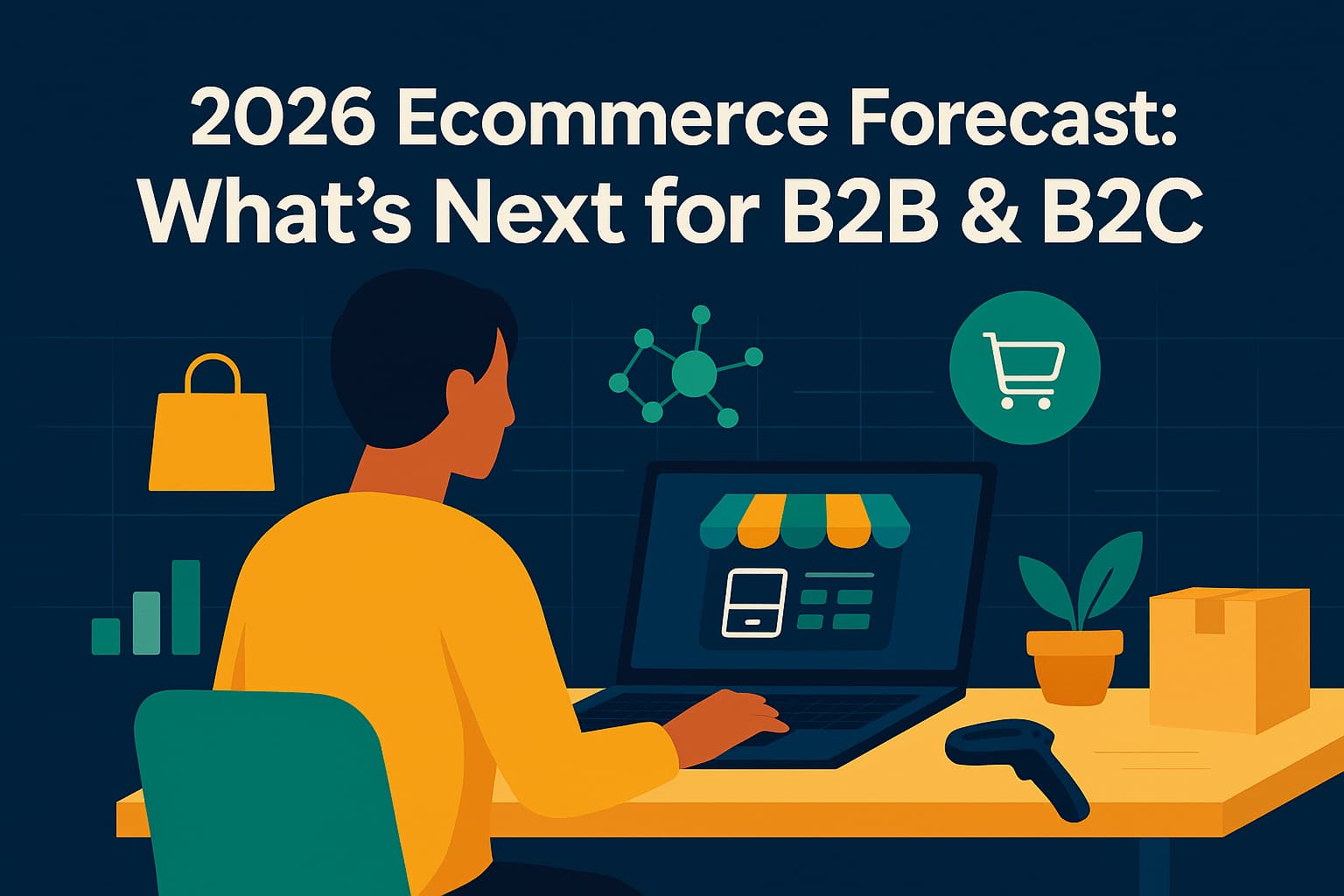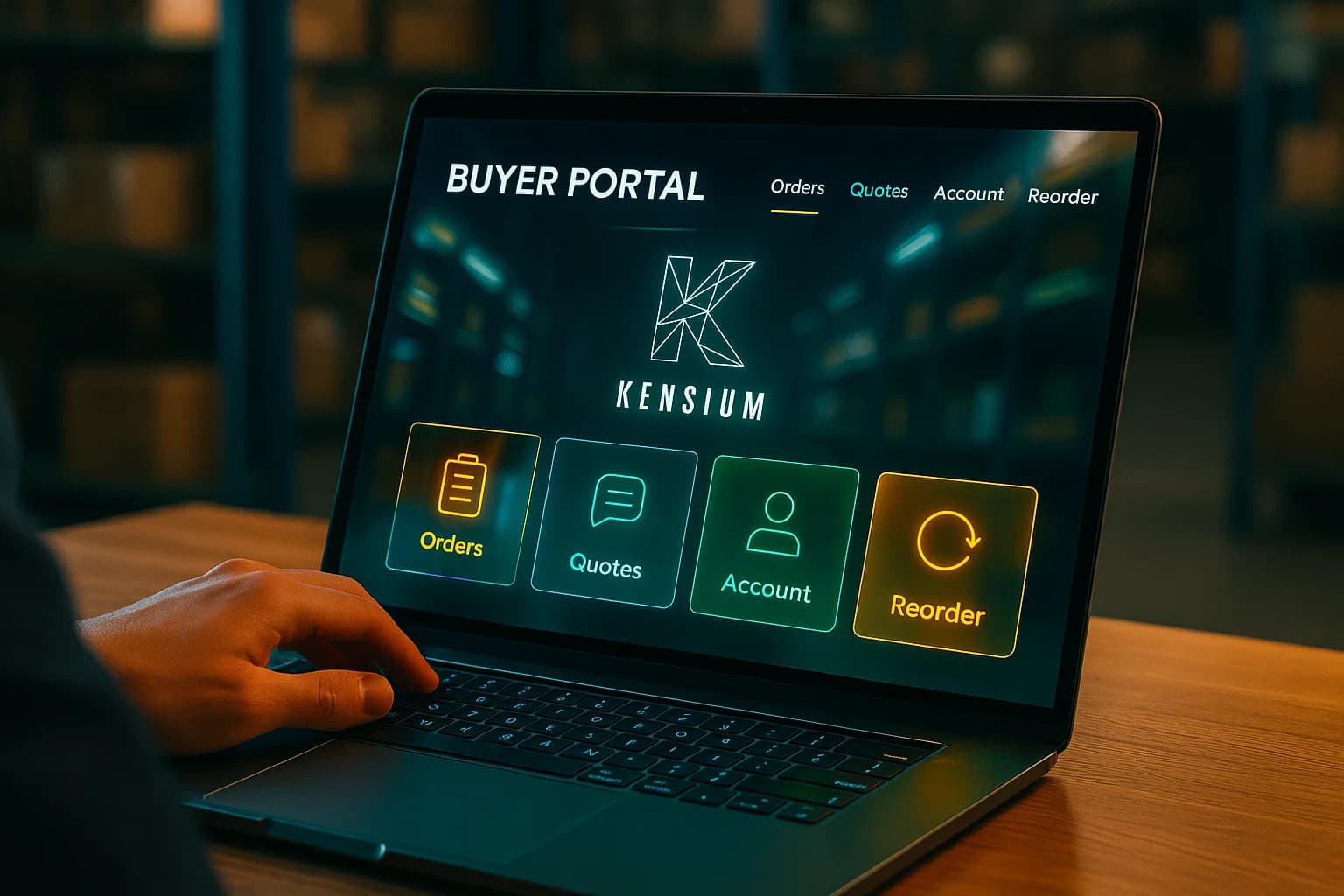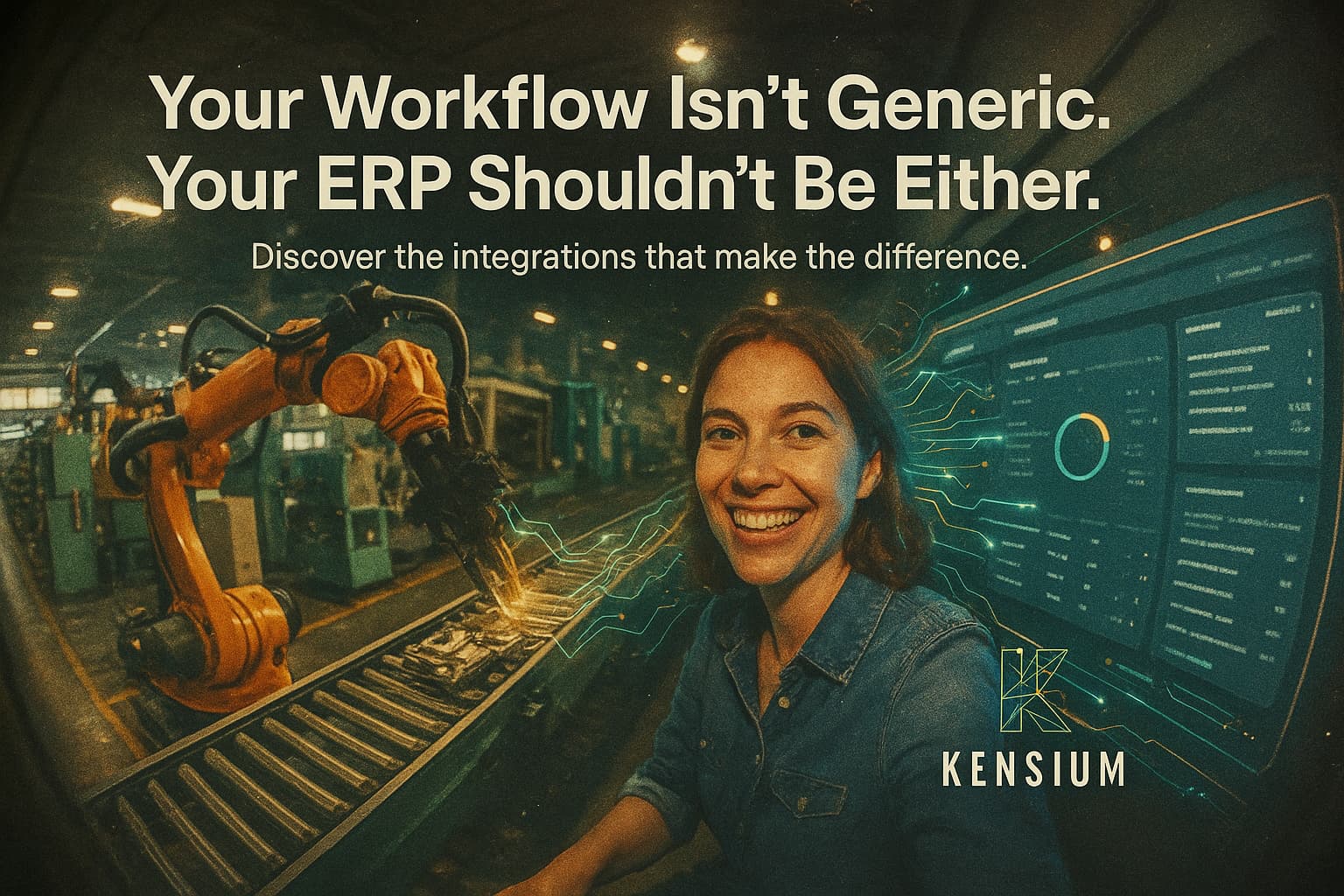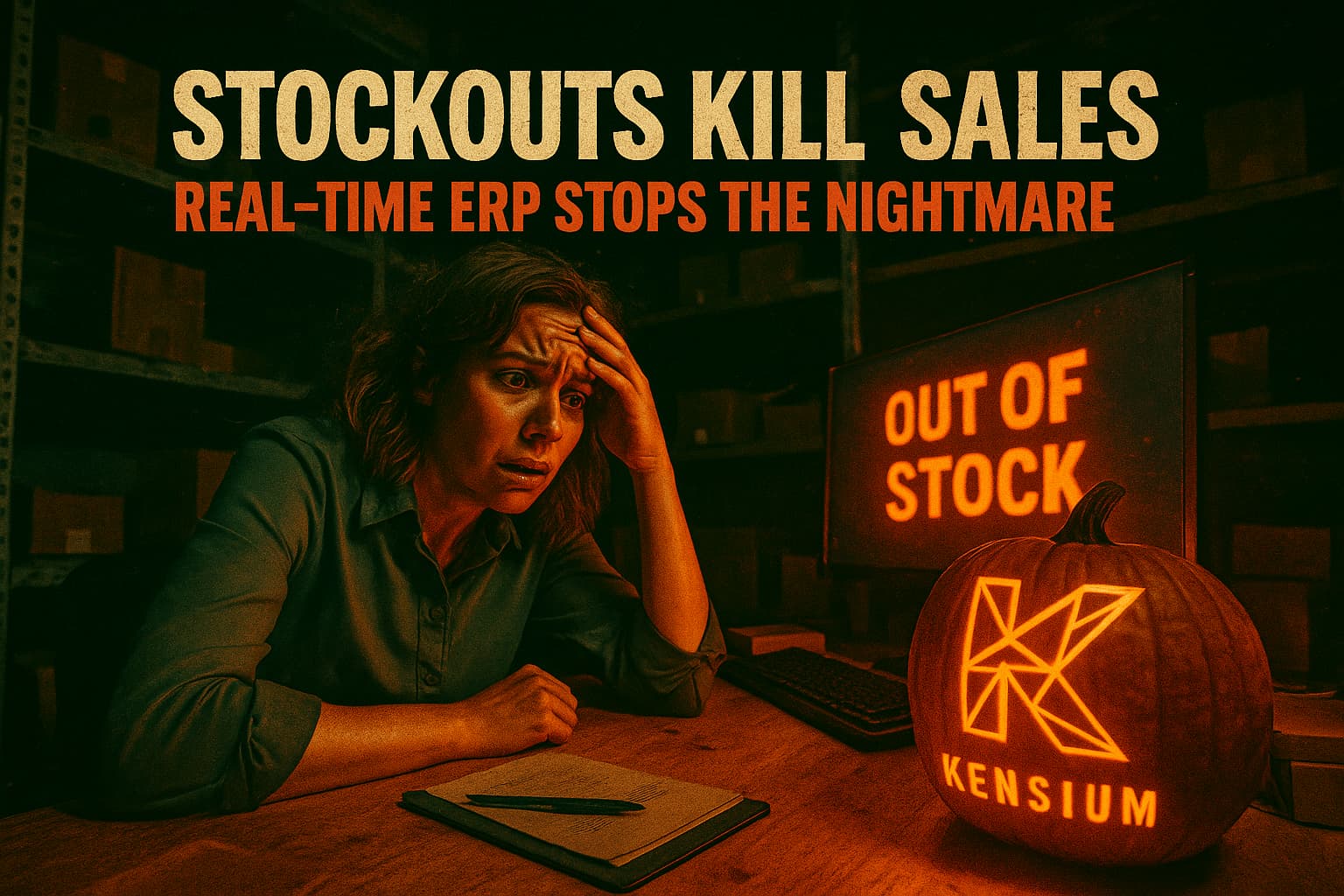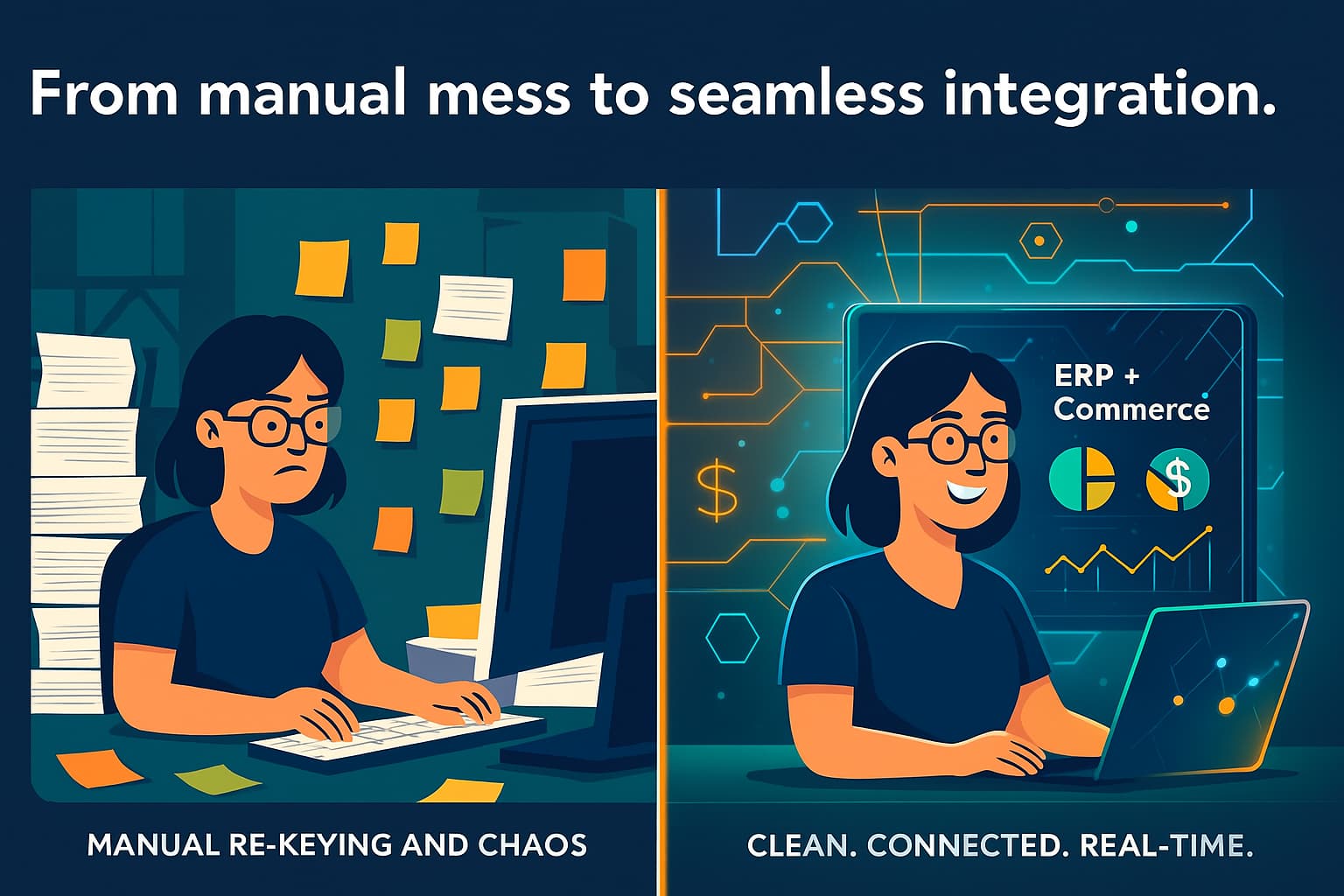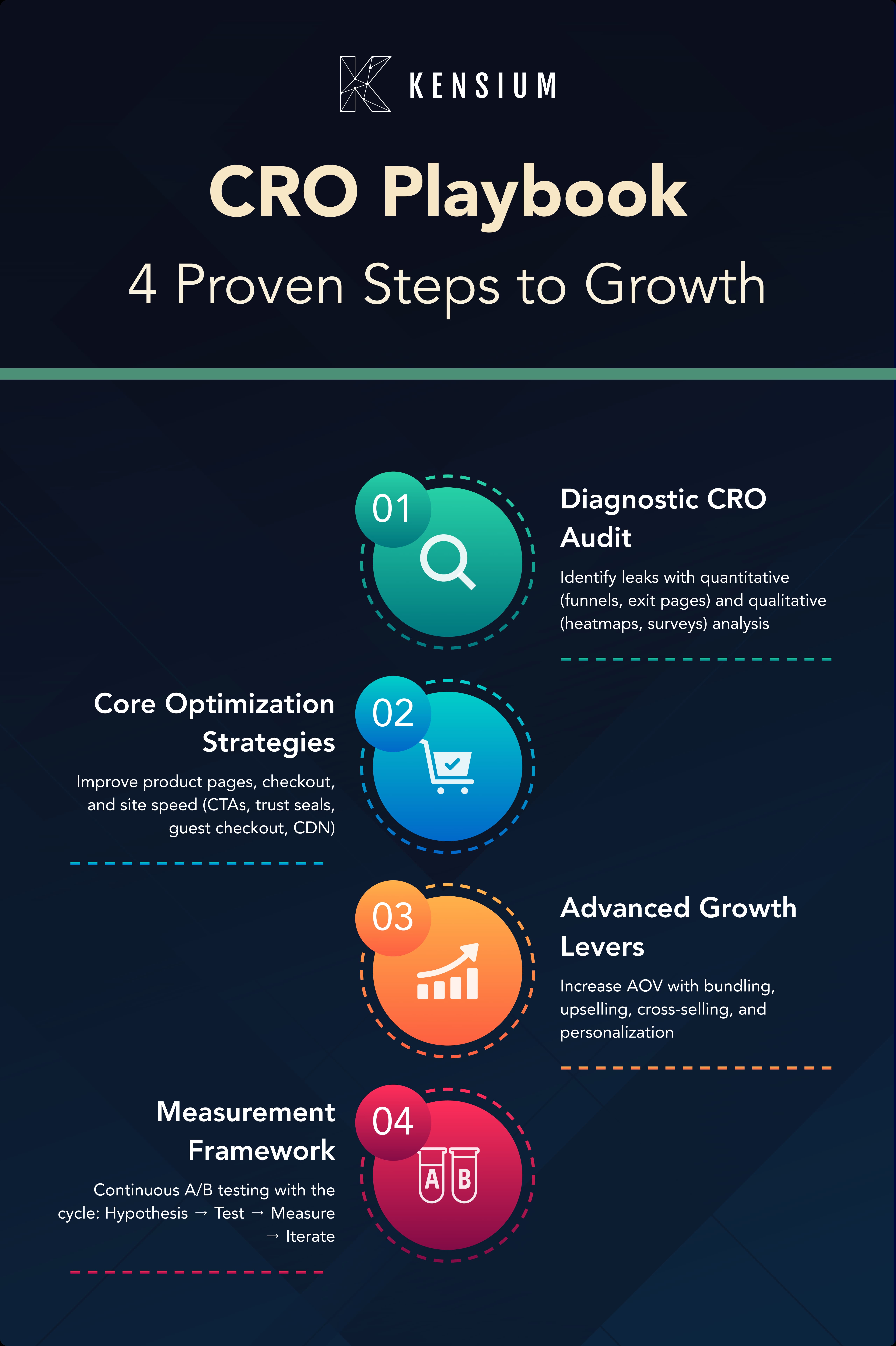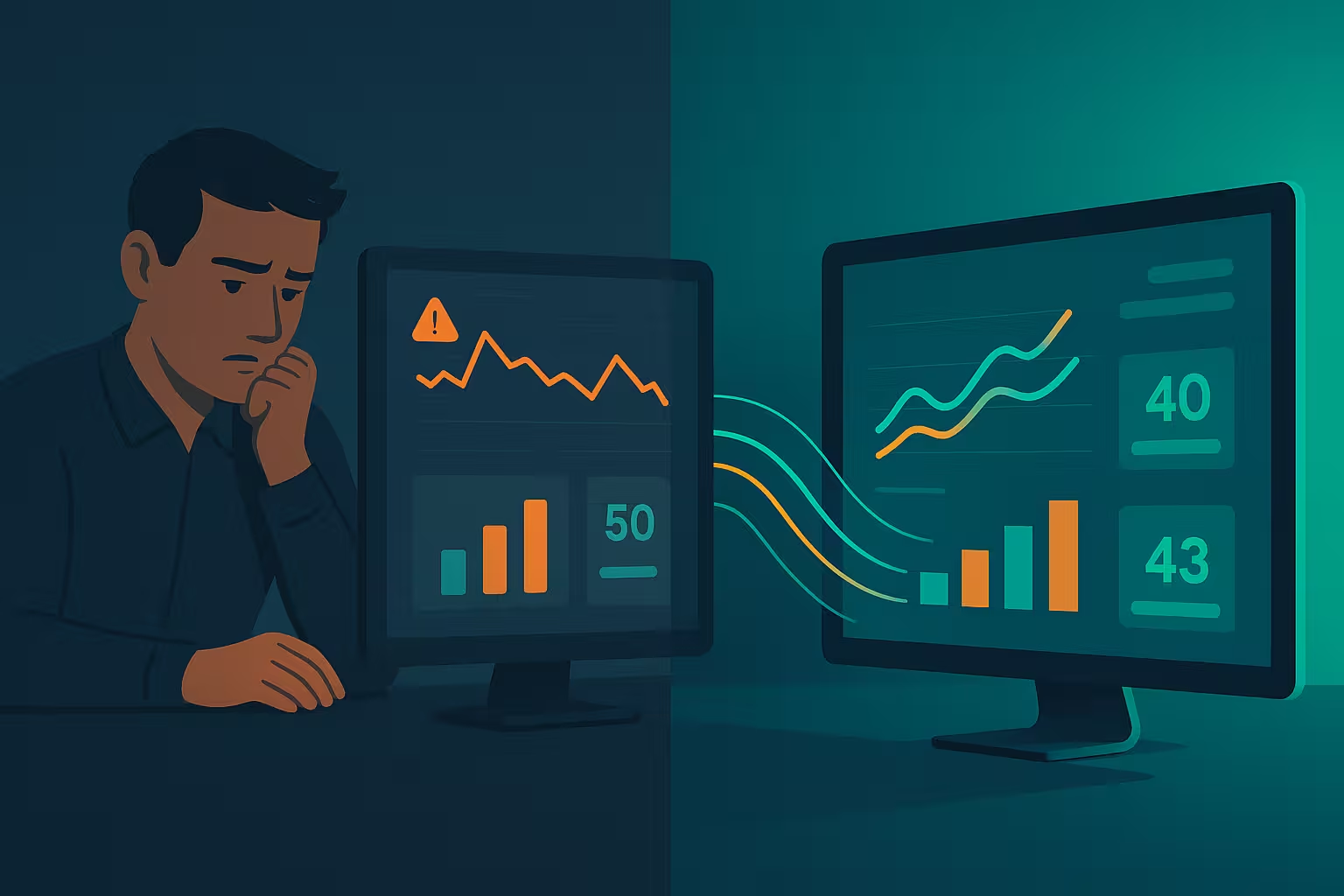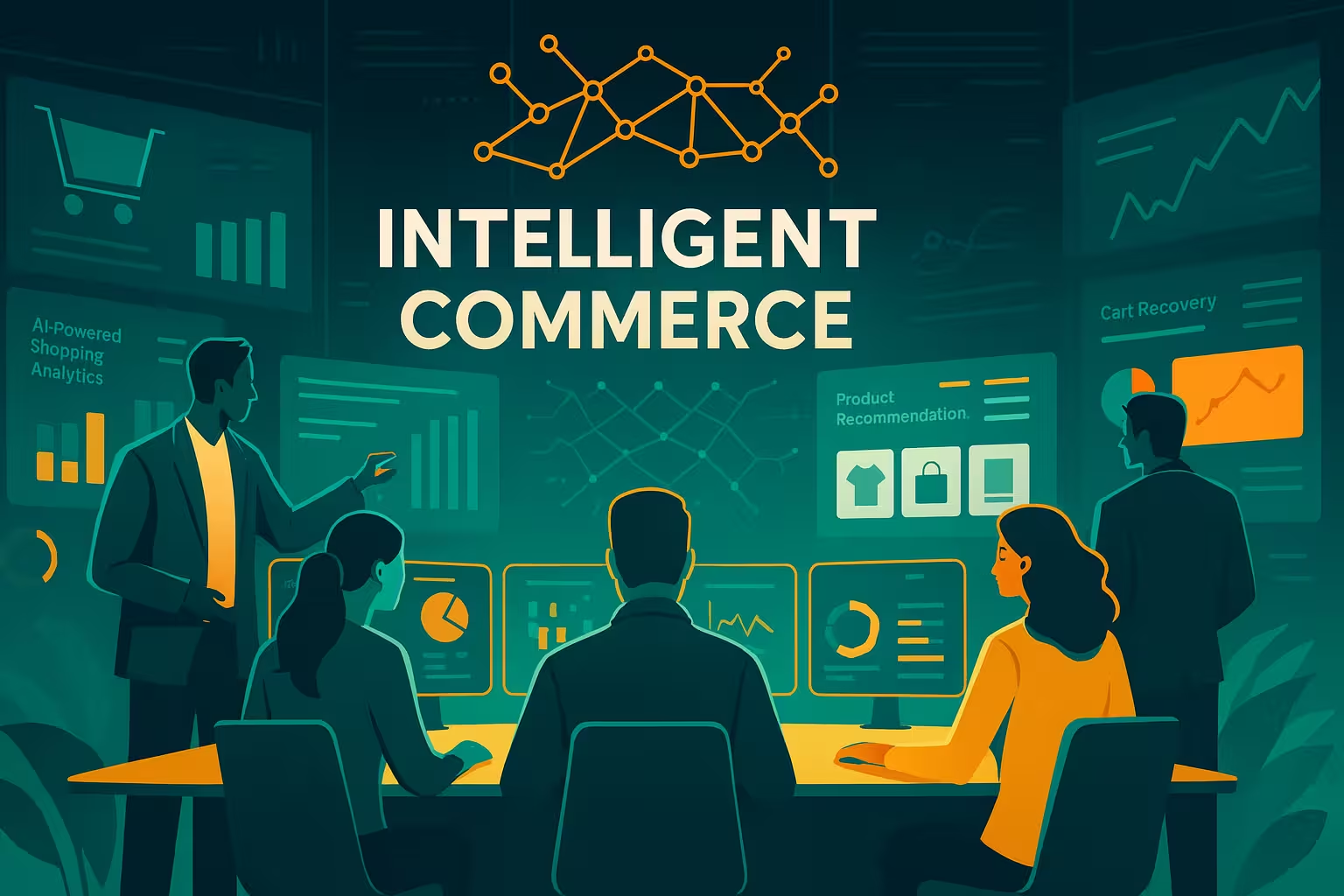
Modern wholesalers and distributors are entering the age of Wholesale 2.0 – a phase where speed and accuracy in operations define success. In a B2B environment increasingly influenced by B2C-like expectations, having fragmented systems is no longer viable. This article explores how integrating your ERP (Enterprise Resource Planning system) with eCommerce and other channels turns your business into a synchronized powerhouse, delivering the speed and accuracy that boost B2B sales. We’ll look at the pitfalls of disjointed systems, why speed and accuracy are critical for wholesale success, and how the right integration (potentially via Kensium’s connectors) can revolutionize your operations.
The Fragmented Systems Trap in Wholesale
Many wholesalers still struggle with siloed, patchwork systems – for example, an eCommerce site, inventory spreadsheets, and an ERP that don’t talk to each other. This fragmentation creates a recipe for errors and missed sales. Manual data re-entry is often the culprit: staff might export orders from the website and re-key them into the ERP, or juggle spreadsheets to update inventory. Not only is this time-consuming, it invites mistakes. As one Reddit user described, without integration “inventory is difficult to keep in sync and there are possibilities of overselling or running out of popular products”[1]. Another industry report by Gartner underscores the issue – 70% of ERP projects fail to meet business goals because critical data handoffs break down, with each manual re-entry between systems creating gaps and corrupting data[2]. In other words, fragmented systems force your team to chase problems (fixing errors, reconciling records) rather than drive growth.
Some common pitfalls wholesalers face with disjointed systems include:
- Lost Orders and Delays: Orders stuck in email or CSV uploads don’t automatically appear in the ERP. Employees must manually input them, leading to typos, SKU mismatches, and shipping delays. A Reddit commenter noted that once they integrated, “no more manual updates [and] orders and reports all flow… it’s like way less stress”[4] – highlighting how painful the prior manual process was.
- Overselling & Stockouts: When your eCommerce inventory isn’t synced with your ERP stock levels, you risk selling items that aren’t actually available. If multiple channels draw from the same warehouse without real-time updates, two customers can buy the last item simultaneously[5]. The result? Backorders, angry calls, and scrambled fulfillment. In contrast, integration pushes real-time stock info to all channels “to prevent situations where items show as available online but are actually out of stock,” as one guide explains[6].
- Pricing and Data Discrepancies: Your ERP might hold correct contract pricing for B2B customers, but your website might not reflect those negotiated rates if systems are separate. This leads to pricing disputes and erosion of customer trust[7]. Likewise, inconsistent product info or order details across systems can confuse customers and staff alike. Disconnected data means decisions are often based on stale or mismatched information – a sure path to errors. As one Reddit user put it, integrating systems gives you “one source of truth. Only if you can do that will ERP make sense. Trust the process.”[8]
- Process Inefficiency & Labor Drain: Every hour your team spends cross-checking and reconciling disparate systems is an hour not spent on value-added activities (like selling or customer service). Manual fixes for inventory counts or financial reconciliation across platforms chew up resources[9]. This not only increases labor costs, but also slows your responsiveness to market changes. In short, fragmented systems keep you playing catch-up.
Why Speed and Accuracy Matter More Than Ever in B2B
In the past, B2B commerce had a bit more slack – buyers would fax orders or tolerate longer lead times due to complex pricing and relationships. Today, that has changed dramatically. Speed and accuracy have become non-negotiable in wholesale distribution, directly impacting sales and customer retention.

B2B buyers now demand an online experience on par with B2C. They expect real-time information, fast fulfillment, and error-free orders. If you can’t provide them, your competitor will. Consider these findings:
- Buyers Switch for Better Service: A recent survey of 1,000 B2B buyers found 86% are willing to switch suppliers if another offers a superior online experience[10][11]. Wholesale and distribution contracts can be lucrative and sticky – but only as long as you meet your buyers’ expectations. A single major slip (like a botched order or inaccurate stock info) can send a long-time client searching for alternatives.
- Errors Erode Trust: An “easy, accurate online experience” is important to 84% of B2B customers, yet 68% of buyers are discouraged from ordering online because of errors in orders[12]. Nothing undermines a B2B relationship faster than the customer feeling like every order is a gamble. If a buyer places orders worth tens of thousands of dollars, they need confidence that the shipment will arrive complete, on time, and billed correctly. Accuracy builds loyalty – consistent data (pricing, inventory, invoices) makes your company reliable in the eyes of customers.
- Information in Real Time: B2B buyers also crave transparency. According to survey data, 31% of buyers said lack of accurate delivery time information was a major frustration, and 28% cited lack of accurate stock levels on the website as a reason they hesitate to order[13]. These are precisely the gaps that occur when your ERP (which knows stock and ETA) isn’t connected to your online store. In wholesale, speed drives sales – for instance, many buyers now expect extremely fast turnaround (41% of B2B buyers even expect next-day delivery, and 24% want it within two hours in certain scenarios[14]). You might not always achieve that, but any delay in even communicating delays or stock issues can lose the deal. Real-time integration ensures your customers see “reliable information on pricing, in-stock inventory, and delivery timelines,” which maintains their trust[15].
- Competitive Pressure & Volume: Wholesale distributors dealing with large order volumes know that slow, error-prone processes limit how many orders you can handle. If your systems aren’t streamlined, scaling up means exponentially more mistakes and delays. On the flip side, companies that emphasize efficiency and accuracy can handle rising order volumes without sacrificing service quality. It’s no wonder that reliability, efficiency, and speed are top reasons buyers prefer online self-service ordering[16]. Being fast and correct isn’t just operational — it’s become a sales strategy to win and keep B2B customers.
From Siloed Chaos to Synchronized Powerhouse: Integration as the Solution
The remedy for these issues is integration – connecting your ERP with your eCommerce platform, CRM, WMS, and other critical systems so they operate as one unified ecosystem. By doing so, you effectively turn your ERP into the central “synchronized powerhouse” of your business, with data flowing seamlessly across all touchpoints. In the words of one Reddit user, “hooking up your eCommerce store with an ERP is a total lifesaver – it keeps inventory updated in real time, pushes orders straight into one system, and gives you clear sales reports without the spreadsheet chaos. Think faster shipping, fewer mistakes, and way less manual work.”[17] Let’s break down how ERP integration boosts speed and accuracy – and in turn, B2B sales:
- Real-Time Inventory & Order Sync: An integrated ERP-eCommerce setup means your inventory levels and order status are updated in real time everywhere. The moment a product sells on your website, the ERP records it and adjusts stock; the moment new stock arrives or is produced, your site reflects it. This “keeps inventory, orders, and financials in sync while cutting manual work”[18]. The benefit is twofold: customers get accurate stock information (preventing oversell or surprise backorders), and you get immediate visibility of incoming orders. Faster order capture leads to faster fulfillment – there’s no lag from a salesperson re-entering data tomorrow or an overnight batch sync. One Reddit commenter highlighted that the “biggest win is everything syncing in real time... fewer overselling/stock-out issues, faster order fulfillment, and cleaner sales/finance reports”[19]. In short, you eliminate the delays and errors that cost sales.
- Single Source of Truth for Data: Integration establishes one authoritative data source. Your ERP becomes the system of record for products, pricing, and customers, feeding all channels. When pricing updates or customer-specific discounts are set in the ERP, they immediately update on the website or portal for that client. This prevents the dreaded scenario of a customer seeing the wrong price online. Moreover, all orders, whether placed online or via a sales rep, funnel into the ERP. The result is consolidated, accurate records. Decision-makers aren’t juggling two versions of the truth when checking sales figures or inventory; reporting is much more reliable. Shopify’s research notes that integrating commerce and ERP “creates a single, accurate source of truth”, so leaders can act on trusted data and protect customer confidence[20][21]. In practical terms, this means fewer customer service calls to verify product availability or order status – the information they see is accurate, which improves their experience and frees your team’s time.
- Accelerated Order-to-Cash Cycle: Automation is a huge part of Wholesale 2.0. With ERP integration, every step from order placement to invoicing can be expedited. For example, when an online B2B order comes in, the integration can auto-create a sales order in the ERP, allocate stock, and even generate an invoice or shipping order without human intervention[22]. Shipping and tracking info then flows back to the customer’s account portal without someone manually emailing them. By automating these workflows, you shorten the order processing time dramatically – meaning customers get their goods faster (driving satisfaction and repeat sales) and you get paid faster. “Unifying commerce and ERP protects profits [and] speeds operations,” as one Shopify B2B guide put it[23][24]. Faster throughput not only means you can handle more volume, but it also impresses B2B clients who value consistent, on-time delivery.
- Reduced Errors and Operational Efficiency: Fewer touchpoints for data entry mean fewer mistakes. Integration essentially “cuts pick errors and shortens order-to-cash” by feeding orders directly to fulfillment and finance[25]. Human error is taken out of the equation for routine tasks. This improves accuracy in orders, invoices, and inventory counts – all of which builds customer trust. Additionally, your team is liberated from mind-numbing tasks like copying data or reconciling systems. They can redirect effort to proactive selling, customer outreach, or optimizing the business. In fact, companies that invested in connecting their systems reported significant efficiency gains – one study found 60% of firms with integrated data saw measurable improvements in streamlined processes[26]. Another stat from NetSuite’s research showed 83% of companies hit ROI expectations on their ERP projects once integrations had been live for over a year[26]. The takeaway: integration pays off in productivity, which ultimately improves your bottom line.
- Enhanced Customer Experience = More Sales: The end goal of all this synchronization is a better experience for your B2B customers, which drives sales growth. When buyers can self-serve with confidence (see real-time stock, get their correct pricing, place orders without issues, track orders seamlessly), they’re more likely to order more, and more often. Conversely, if you don’t offer this, you risk losing them (recall that 74%–91% will jump to a competitor for a better online experience[27][28]). By integrating your ERP, you’re effectively offering the convenience of a modern eCommerce experience with the personalized reliability of a traditional B2B relationship. For example, consider Death Wish Coffee, a company that connected their ERP to their online store before a major promotion – they were able to handle 150,000 simultaneous website visitors and process $250,000 in orders in just two hours during a Super Bowl ad campaign, all without system breakdowns[29]. That kind of scalability and responsiveness simply isn’t possible when you’re stuck in spreadsheet-land. While not every wholesaler will face a Super Bowl spike, the principle holds: integration makes you agile. You can respond to big opportunities or adapt to disruptions quickly because your data and processes are unified.
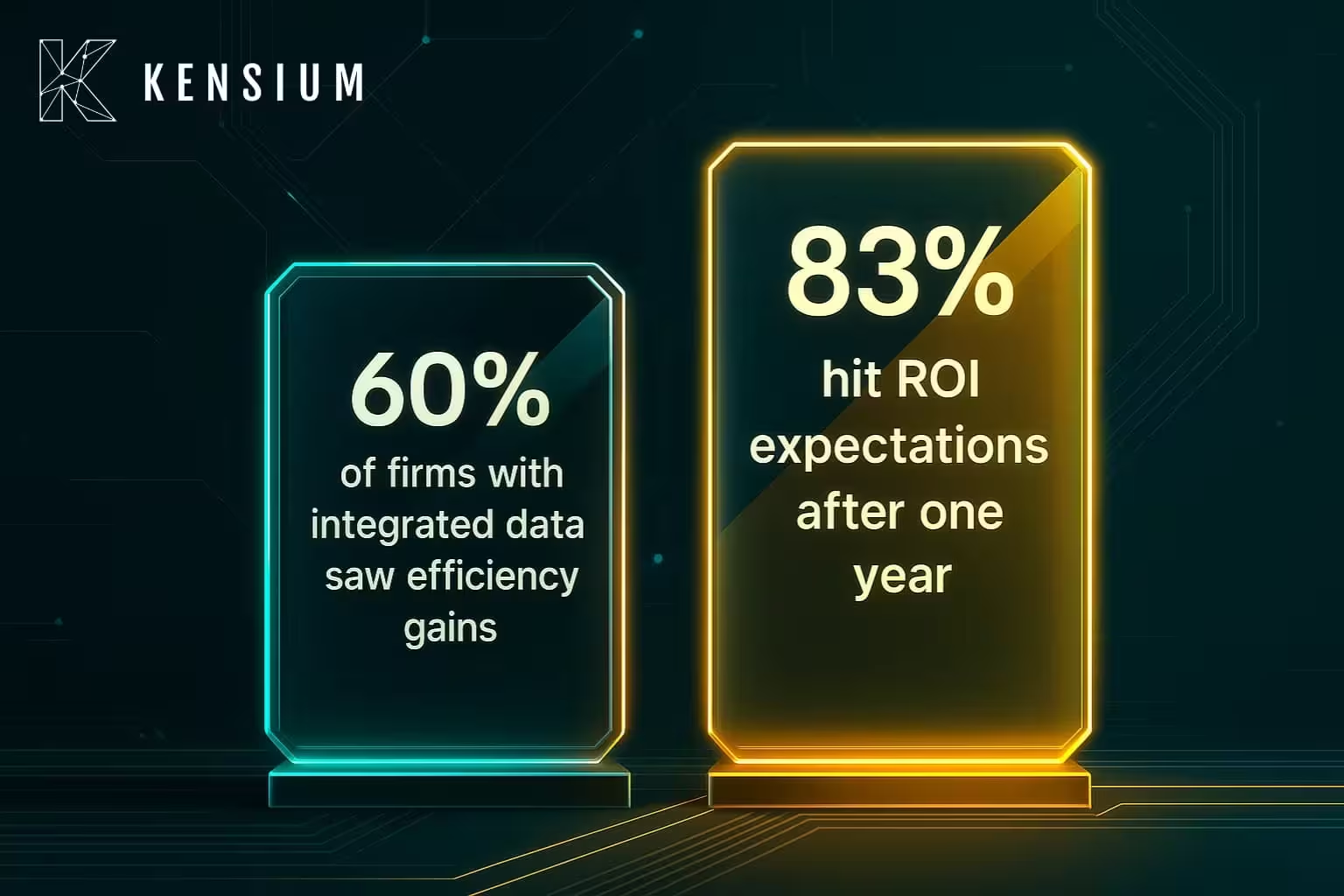
Achieving Wholesale 2.0 with the Right Integration (Kensium Can Help)
Moving to an integrated, Wholesale 2.0 model might sound daunting, but the good news is that modern integration solutions make it easier than ever. Gone are the days of months of custom coding to get two systems to talk. Today you have options like APIs, middleware, and pre-built connectors that bridge eCommerce platforms and ERPs in a reliable, upgrade-safe way[30][31]. The key is to choose a solution that fits your business needs and systems. Here are a few considerations:
- Pre-built Connectors: If you’re using a popular eCommerce platform or ERP, there may already be off-the-shelf connectors available. These are modules or extensions designed to map and synchronize data between specific systems. For example, Kensium’s BigCommerce B2B Connector links the BigCommerce platform with Acumatica Cloud ERP, enabling real-time integration of orders, inventory, customer data, and even advanced B2B features like customer-specific pricing and approvals[32]. Likewise, Kensium offers an Acumatica–Adobe Commerce (Magento) Connector that “provides a bridge between two powerful solutions,” syncing products, stock, customers, orders and shipments so that Acumatica ERP becomes the single source of truth for the Adobe Commerce storefront[33][34]. These connectors can dramatically speed up your integration project and are built with wholesale needs in mind (e.g. handling large catalogs, customer-specific terms, etc.).
- APIs and Custom Integrations: Most modern ERPs and eCommerce platforms have robust APIs. With the right development expertise, you can create custom integrations to tailor the data flow exactly as you need. This is useful if you have very unique processes. However, custom builds should be approached carefully – ensure you plan for error handling, data mapping, and ongoing maintenance. Often, working with an integration partner (like a solutions provider familiar with both systems) can accelerate this process. Kensium, for instance, specializes in unified commerce solutions and ERP integration; our team follows a proven methodology to define requirements, map data fields, and rigorously test integrations so that “systems communicate effectively” without data loss[35]. Engaging experts can save you from pitfalls and get you to value faster.
- Middleware / iPaaS: Integration-Platform-as-a-Service (iPaaS) solutions or middleware can serve as translators between systems. These platforms (MuleSoft, Dell Boomi, etc.) come with connectors and a hub to transform and route data. They’re especially useful if you have multiple systems to integrate (ERP, eCommerce, CRM, marketplace channels, etc.) as they provide a central pipeline for all data exchange. The trade-off is cost and complexity – you’re adding another system to your architecture. For many mid-size wholesalers, a direct connector approach is often simpler and more cost-effective, but middleware can be great for highly complex enterprises.
- Incremental Integration Strategy: You don’t have to do everything at once. A smart approach is to identify the most critical integration points (perhaps orders and inventory sync to start)[5]. Implement those, get quick wins (fewer errors, faster fulfillment right away), and then layer on additional integrations (like syncing customer account data, or connecting your ERP to your CRM for unified customer insights). This phased approach lets you deliver benefits to the business faster and learn along the way. Just be sure that whatever solution you choose can scale and extend to other areas as needed.
By integrating your systems, you truly empower your ERP to function as the nerve center of a synchronized operation. Instead of separate islands of data, you get one cohesive platform driving your business forward. The results speak for themselves: fewer errors, faster processes, happier customers, and ultimately more sales. One Reddit user summarized their experience after integration: “everything… works together [and] tbh no more manual updates... it’s like way less stress”[4]. No more firefighting data issues – you can focus on growth initiatives.
Conclusion
Wholesale 2.0 is all about operational excellence fueling sales growth. Integrating your ERP system with your commerce channels transforms your wholesale business from a reactive, fragmented operation into a proactive, synchronized powerhouse. Speed and accuracy go from elusive goals to standard operating procedure. Your team spends less time fixing mistakes and more time building customer relationships and closing deals. Your customers get the reliable, real-time service they crave, deepening their loyalty.
In an era where B2B buyers expect instant, error-free transactions, this integration-driven agility is a true competitive advantage. By leveraging solutions like Kensium’s ERP integration services and connectors for platforms like Adobe Commerce and BigCommerce, wholesalers can quickly bridge system gaps and future-proof their business[36][32]. The end result? An ERP that isn’t just a record-keeping system, but the engine of your growth – coordinating eCommerce, fulfillment, and data into a seamless whole. Embrace Wholesale 2.0 by breaking down the silos, and watch as the boosts in speed, accuracy, and customer satisfaction translate directly into higher B2B sales.
Ready to unlock Wholesale 2.0 for your business? Talk to Kensium’s ERP–eCommerce integration experts today and see how we can transform your ERP into a synchronized powerhouse that drives speed, accuracy, and sales.
Sources:
- Reddit – Discussion on benefits of ERP-eCommerce integration (user comments on inventory sync, manual work reduction)[1][17][19]
- Shopify Plus – “A Guide to B2B ERP Integration That Delivers ROI (2025)” – Gartner data on integration, benefits of unified systems[2][20]
- Digital Commerce 360 – Sana Commerce B2B Buyer Survey (2024) – Statistics on buyer expectations for accuracy and willingness to switch suppliers[11][12]
- BigCommerce – “B2B Ecommerce ERP Integration: Key Features + Solution Elements” – Notes on consolidating data, reducing errors with integration[38][39]
- Kensium – Acumatica–Adobe Commerce Connector page – Details on real-time data sync between ERP and eCommerce, turning ERP into single source of truth for inventory, orders, etc.[33][34]
- Kensium – BigCommerce B2B Connector info – Example of connector enabling unified, real-time B2B eCommerce integration with ERP[32]
[1] [4] [8] [17] [18] [19] [25] What are the benefits of integrating an ERP system with my eCommerce store? : r/ERP
https://www.reddit.com/r/ERP/comments/1npaewm/what_are_the_benefits_of_integrating_an_erp/
[2] [6] [20] [21] [23] [24] [26] [29] A Guide to B2B ERP Integration That Delivers ROI (2025) - Shopify
https://www.shopify.com/enterprise/blog/b2b-ecommerce-erp-integration
[10] [11] [12] [13] [15] [27] [28] Sana Commerce survey: B2B sellers lose online buyers over errors
[14] B2B Ecommerce Stats 2025 | Coalition Technologies | Current Trends & Statistics On B2B Ecommerce Market Size, Buyer Expectations, AI & Automation, Content Marketing, SEO, and More | Explore Actionable Insights and Practical Solutions
https://coalitiontechnologies.com/blog/b2b-ecommerce-stats-2025
[16] B2B Buyer Report 2025: Unlock Real-Time Data - Sana Commerce
https://www.sana-commerce.com/report/b2b-buyer/
[30] [31] [38] [39] B2B Ecommerce ERP Integration: Key Features + Solution Elements
https://www.bigcommerce.com/articles/b2b-ecommerce/b2b-erp-integration/
[32] [35] Ecommerce ERP Integration for Magento, Shopify & BigCommerce
https://www.kensium.com/enterprise-integrations
[33] [34] [36] Acumatica ERP Connector for Adobe Commerce |Kensium








.png)




